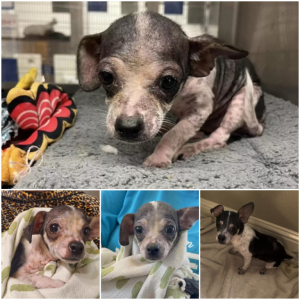Witnessing a dog suffering from maggot infestation can be a distressing sight. These parasitic larvae, feeding on the dog’s flesh, can cause severe discomfort and health complications if left untreated. However, with prompt action and proper care, it’s possible to rescue the affected canine and alleviate its pain. In this article, we’ll explore the process of removing maggots from a dog’s skin, highlighting the importance of timely intervention and compassionate treatment.
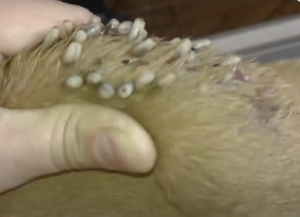
Identifying Maggot Infestation: The first step in rescuing a dog from maggot infestation is recognizing the signs. Owners should be vigilant for symptoms such as excessive scratching, foul odor emanating from wounds, visible maggots on the skin, and signs of discomfort or distress in the affected animal. Promptly identifying these indicators is crucial for initiating the rescue process before the infestation worsens.
Immediate Action: Upon discovering maggots on a dog’s skin, immediate action is essential to prevent further harm. Begin by gently restraining the dog to avoid exacerbating its distress. Carefully examine the affected areas, using gloves and a magnifying glass if available, to locate and assess the extent of the infestation. It’s crucial to remain calm and focused during this process to ensure effective treatment.
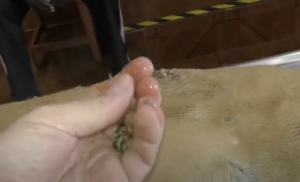
Removing Maggots: To remove maggots from the dog’s skin, proceed with caution and gentleness. Use a pair of tweezers or forceps to carefully pluck out each maggot from the affected areas, taking care not to crush or injure the larvae in the process. Work systematically, starting from the periphery of the infested area and moving inward, ensuring thorough removal of all maggots. As you extract the larvae, place them in a container filled with soapy water to prevent escape and further infestation.
Cleaning and Disinfecting: Once all maggots have been removed, proceed to clean and disinfect the dog’s wounds thoroughly. Use a mild antiseptic solution or saline solution to irrigate the affected areas, flushing out any remaining debris or bacteria. Gently pat the skin dry with clean gauze or a soft towel, being careful not to cause additional trauma to the dog’s sensitive skin.
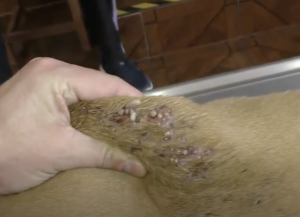
Applying Medication: After cleaning the wounds, apply a suitable topical medication or ointment recommended by a veterinarian to promote healing and prevent infection. Follow the veterinarian’s instructions regarding dosage and frequency of application, ensuring the dog receives optimal care during its recovery period. Additionally, consider administering oral antibiotics or pain medication as prescribed to address any underlying infections or discomfort.
Monitoring and Follow-Up: Throughout the dog’s recovery process, it’s essential to monitor its condition closely for any signs of complications or recurrence of maggot infestation. Keep the affected areas clean and dry, regularly inspecting them for healing progress and addressing any concerns promptly. Follow up with your veterinarian as needed to ensure the dog receives appropriate medical attention and support until fully recovered.
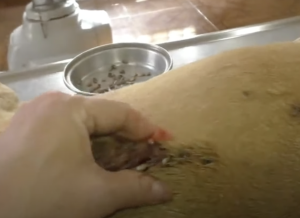
Conclusion: Rescuing a dog from maggot infestation requires swift action, careful attention, and compassionate care. By promptly identifying and removing maggots from the affected skin, followed by thorough cleaning, medication, and monitoring, owners can help alleviate the dog’s suffering and facilitate its recovery. Remember, every dog deserves to live free from pain and discomfort, and with proper treatment, they can once again thrive in a safe and loving environment.
Video:


